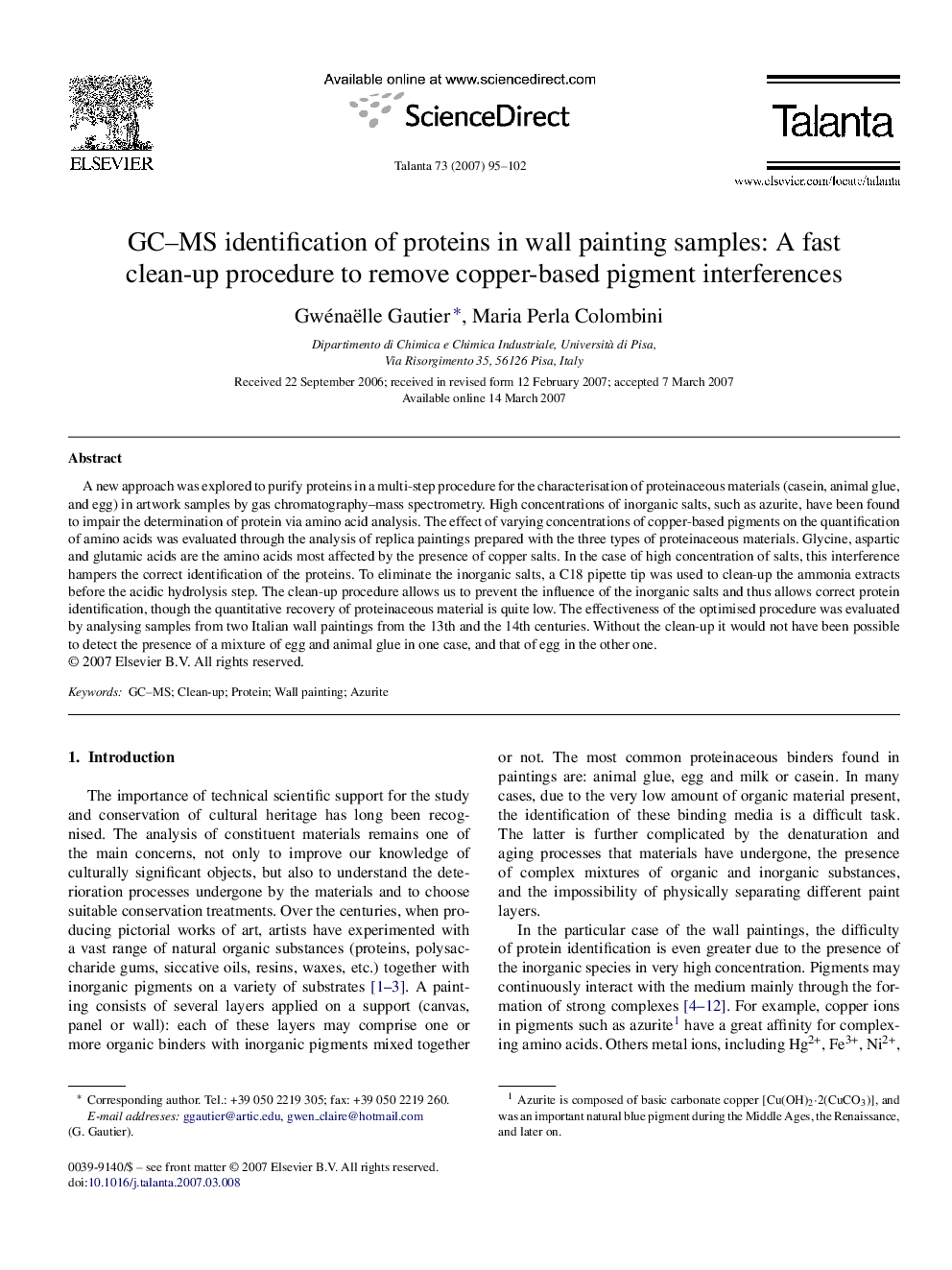| Article ID | Journal | Published Year | Pages | File Type |
|---|---|---|---|---|
| 1244859 | Talanta | 2007 | 8 Pages |
A new approach was explored to purify proteins in a multi-step procedure for the characterisation of proteinaceous materials (casein, animal glue, and egg) in artwork samples by gas chromatography–mass spectrometry. High concentrations of inorganic salts, such as azurite, have been found to impair the determination of protein via amino acid analysis. The effect of varying concentrations of copper-based pigments on the quantification of amino acids was evaluated through the analysis of replica paintings prepared with the three types of proteinaceous materials. Glycine, aspartic and glutamic acids are the amino acids most affected by the presence of copper salts. In the case of high concentration of salts, this interference hampers the correct identification of the proteins. To eliminate the inorganic salts, a C18 pipette tip was used to clean-up the ammonia extracts before the acidic hydrolysis step. The clean-up procedure allows us to prevent the influence of the inorganic salts and thus allows correct protein identification, though the quantitative recovery of proteinaceous material is quite low. The effectiveness of the optimised procedure was evaluated by analysing samples from two Italian wall paintings from the 13th and the 14th centuries. Without the clean-up it would not have been possible to detect the presence of a mixture of egg and animal glue in one case, and that of egg in the other one.
